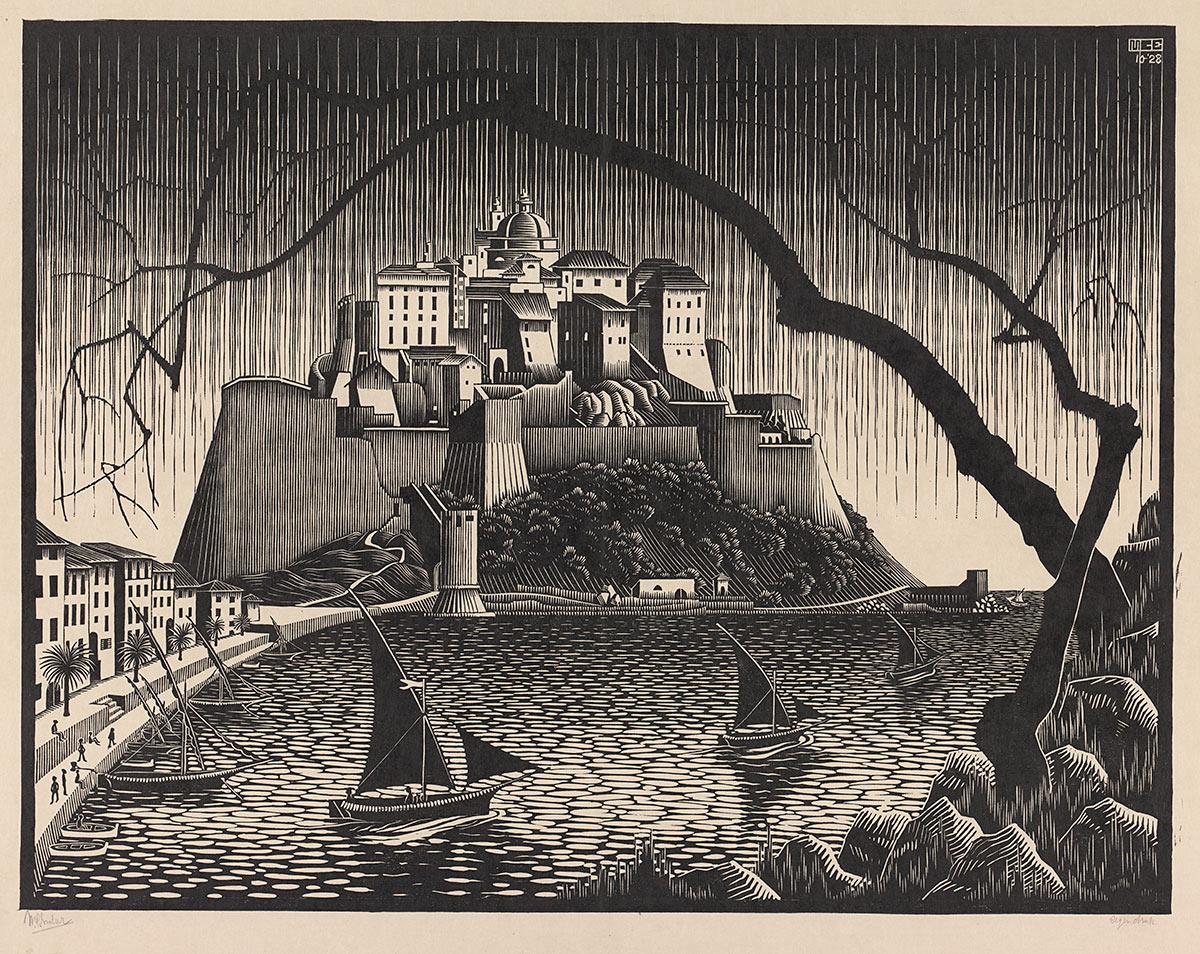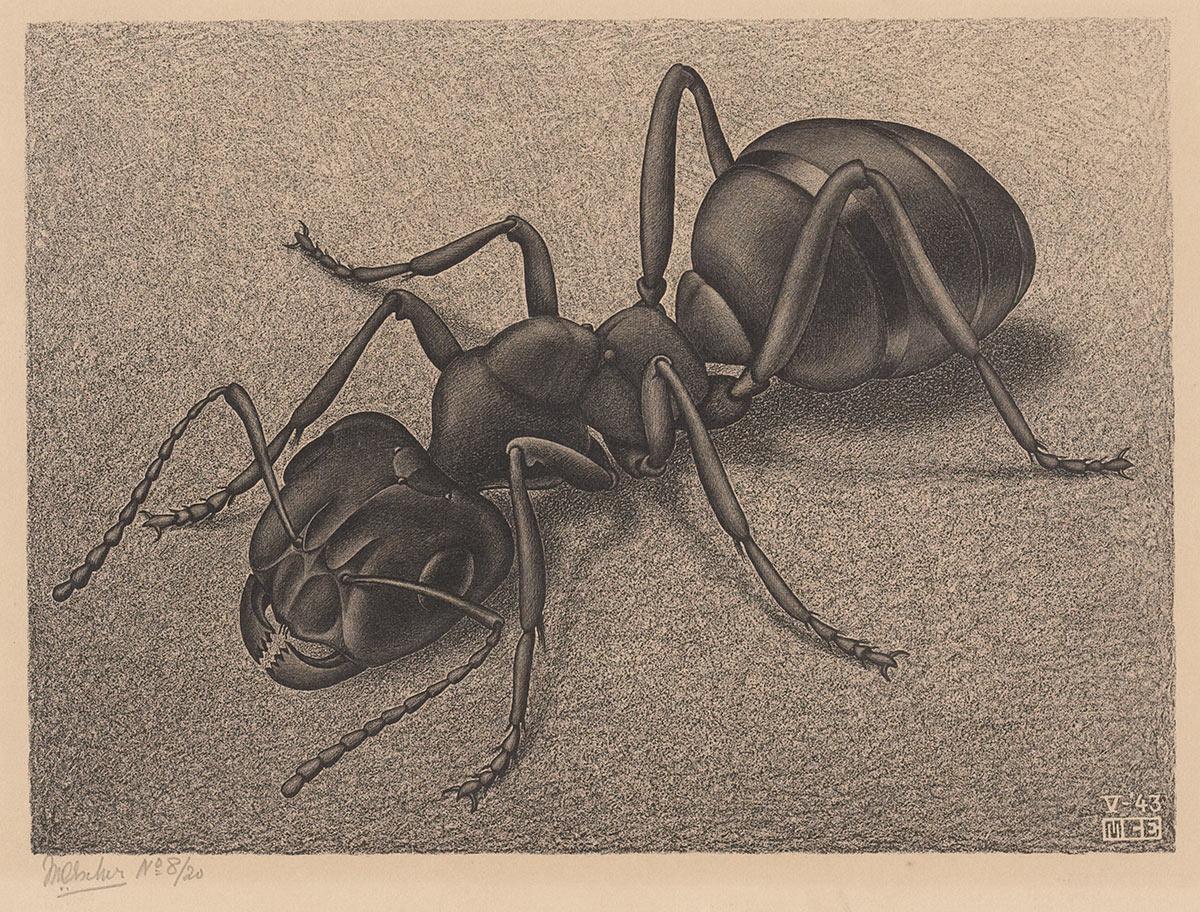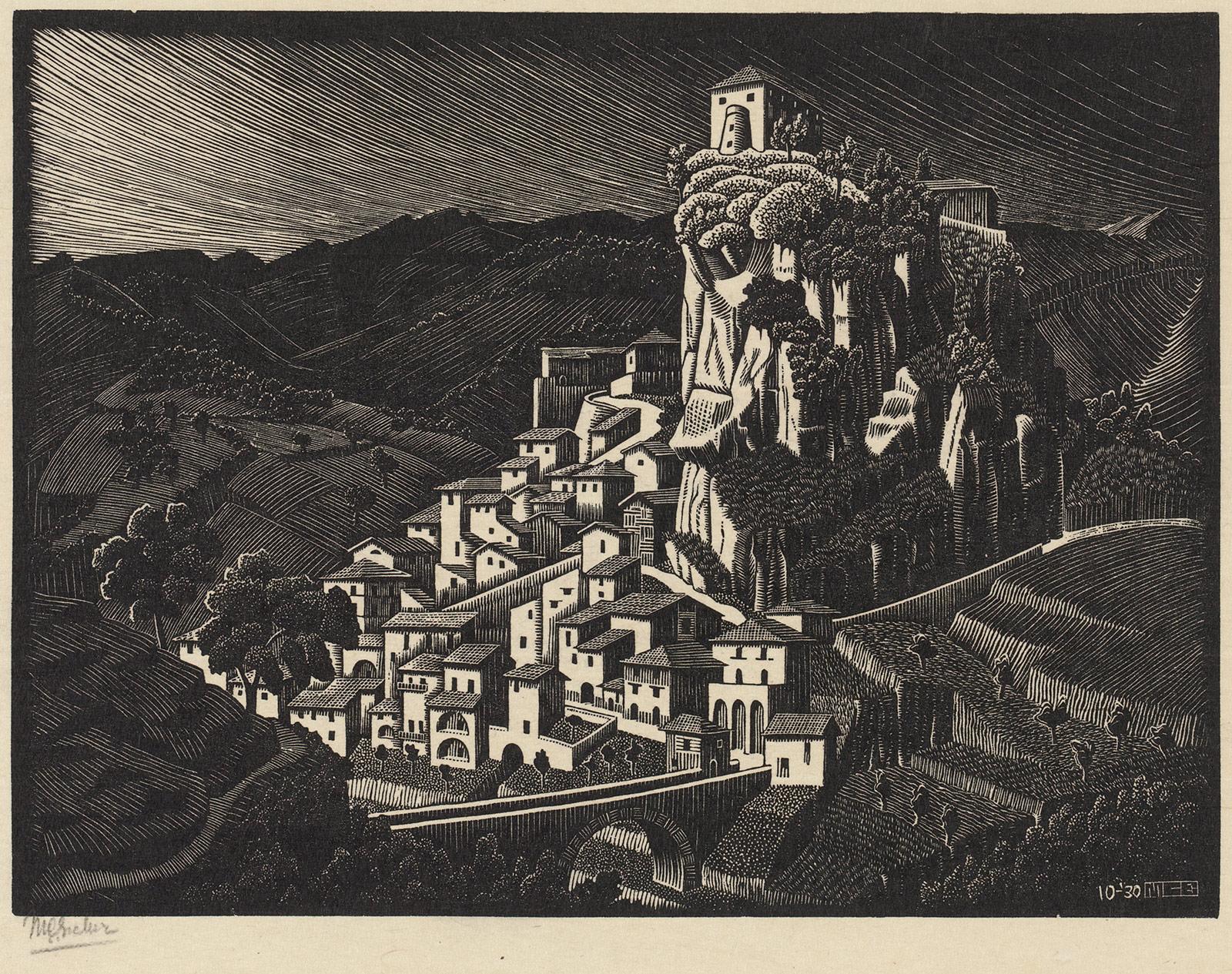

In October 1956 Escher created the woodcut and wood engraving Smaller and Smaller. It is the most detailed of all his prints. The ultimate expression of his abilities.
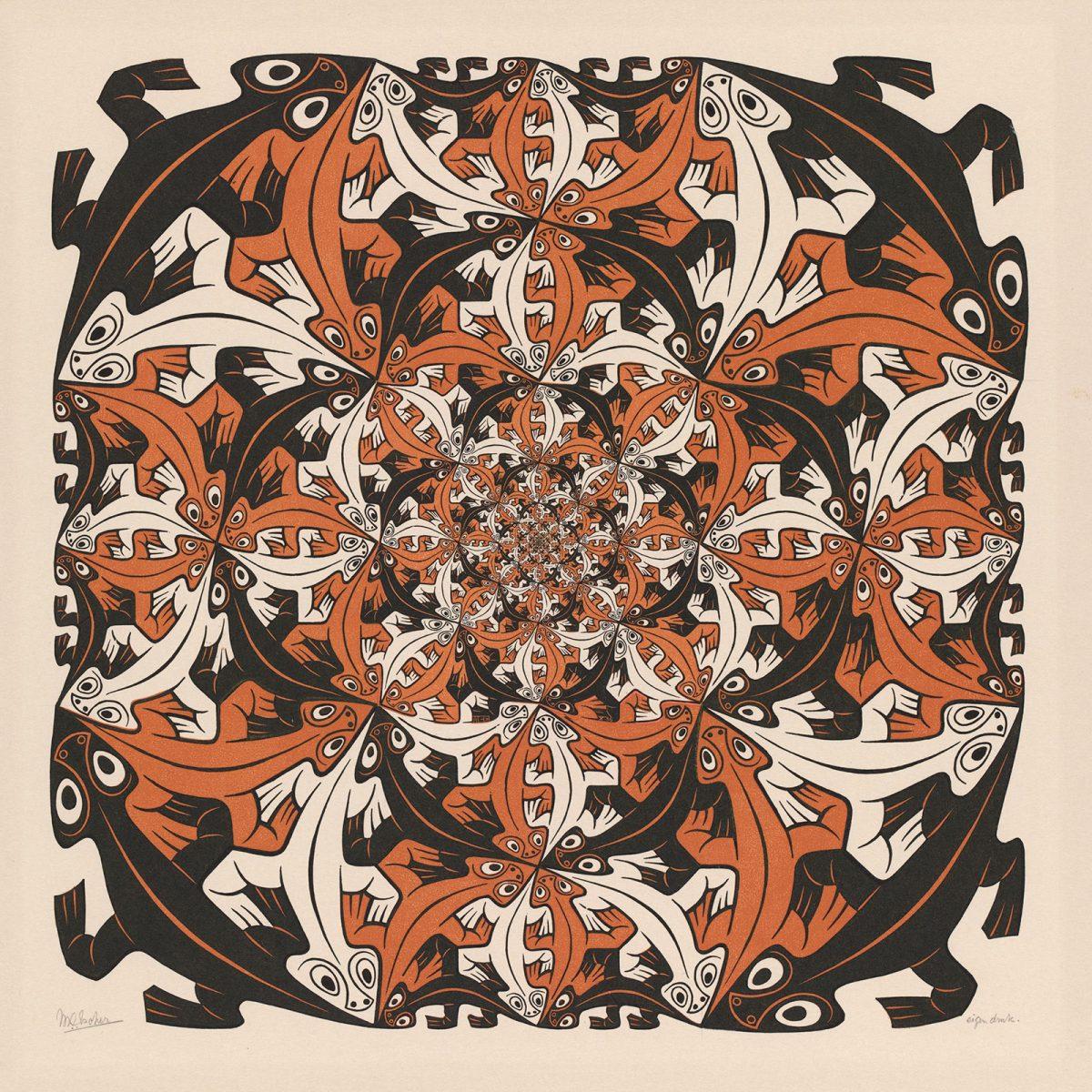
In his own words *:
'The area of each of the reptile-shaped elements of this pattern is regularly and continuously halved towards the centre, where theoretically both infinite smallness in size and infinite greatness in number are reached. However, in practice, the wood-engraver soon reaches the end of his tether. He is dependent on four factors: the quality of his woodblock, the sharpness of his tool, the steadiness of his hand and his optical ability (good eyesight, plenty of light and a powerful magnifying lens). In this particular case, the halving of the figures is continued ad absurdum. The smallest animal still possessing a head, a tail and four legs is about two millimetres long.'
Yet Escher was not satisfied. It annoyed him that the edge of his print allowed the expansion of ever-larger figures. If his woodblock were large enough, he could theoretically let his print grow indefinitely. He had to look for a solution in which the endlessness was caught in the frame of the print. He finally found a solution after extensive correspondence with the Canadian professor H.S.M. Coxeter. This correspondence gave rise to his four circle limits. Prints in which the endlessly diminishing figures are enclosed by a circle.
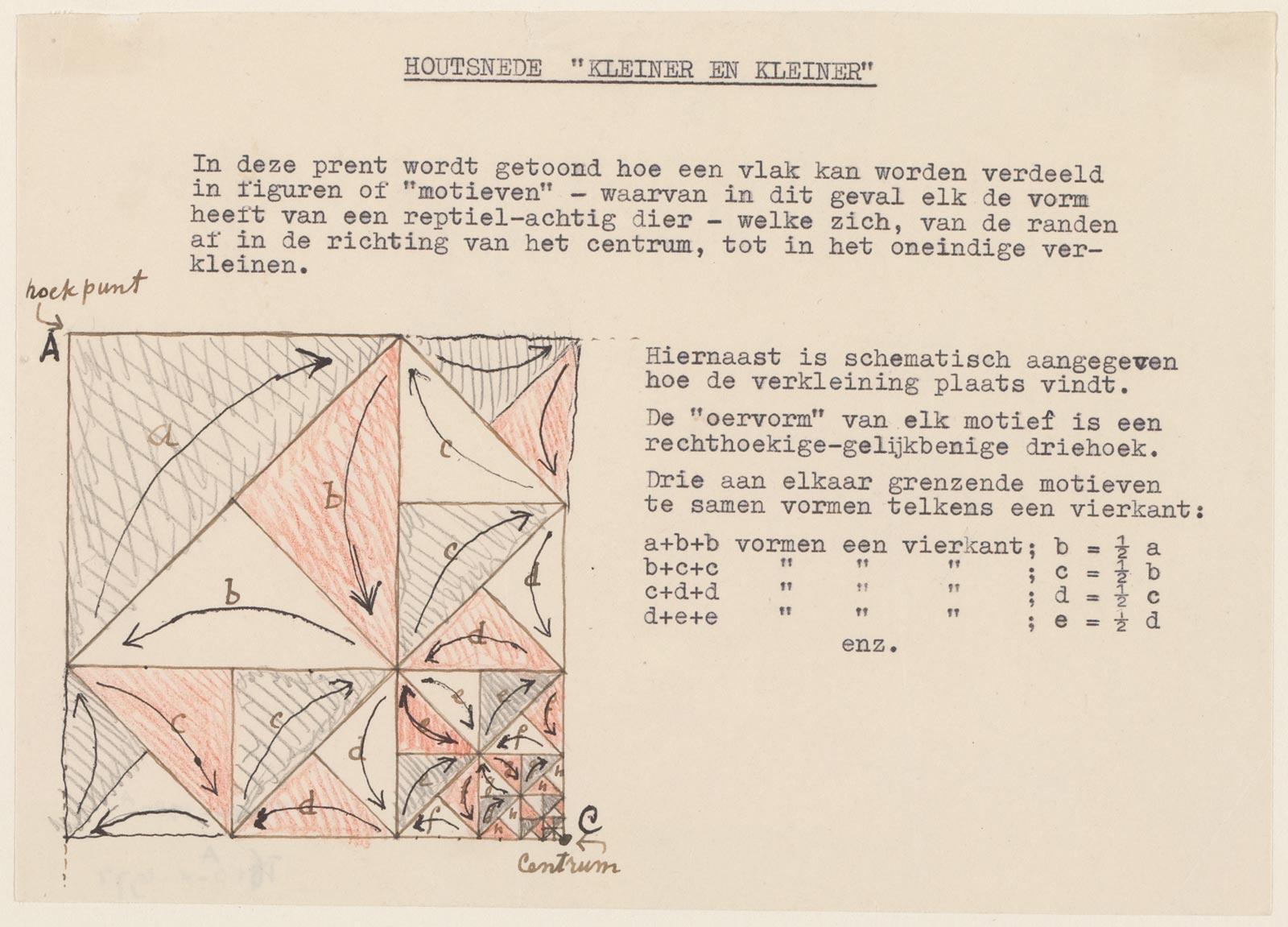
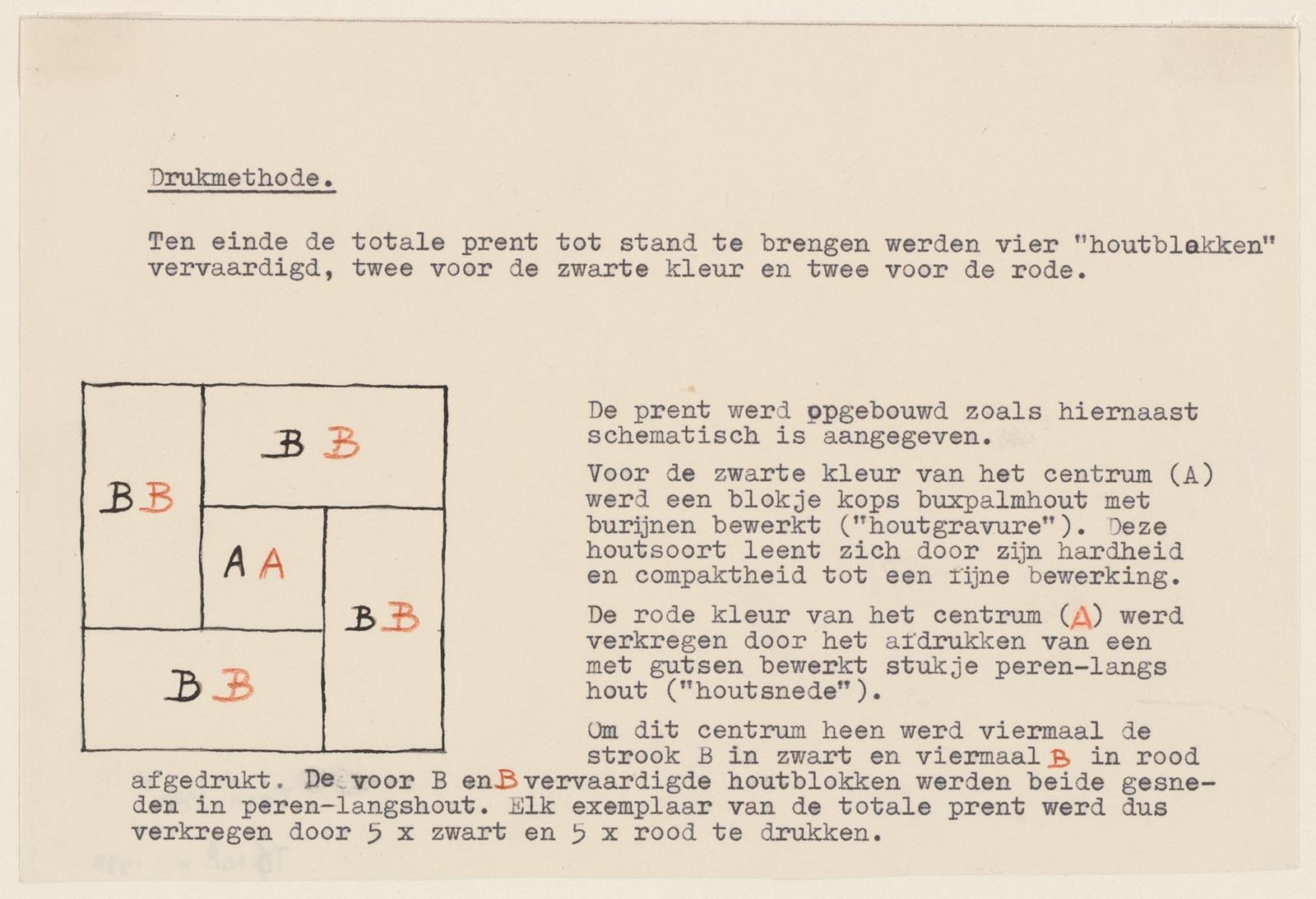
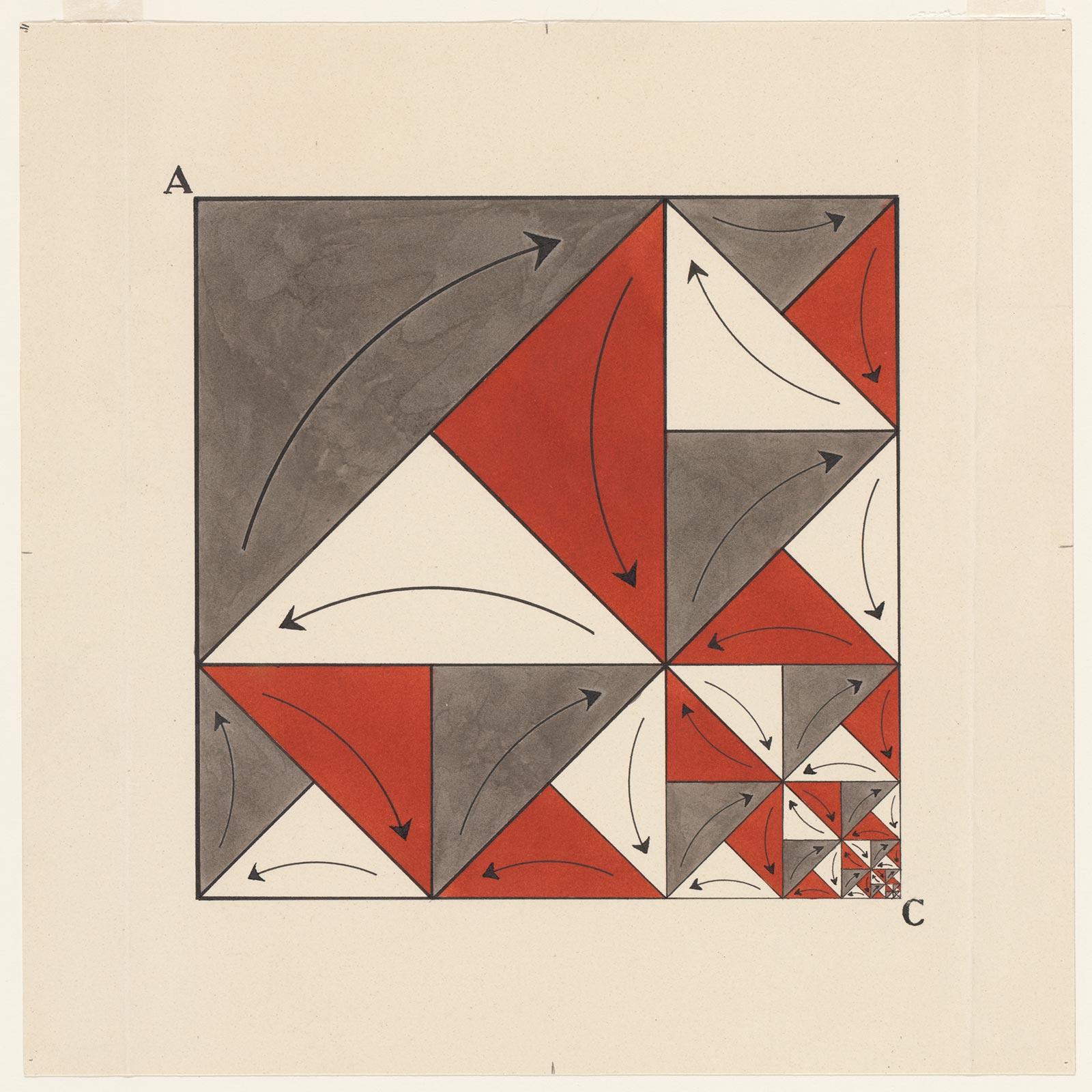
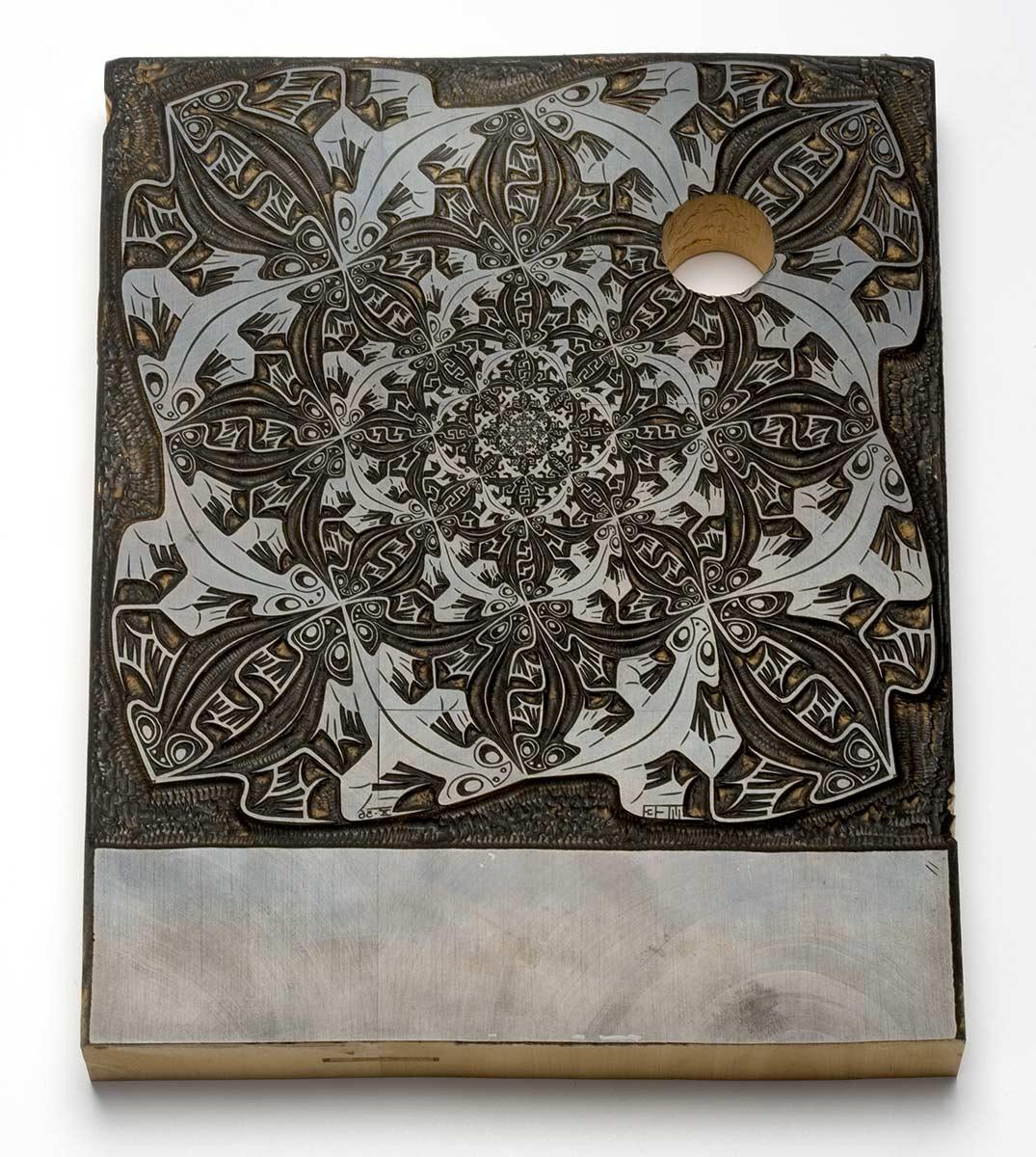
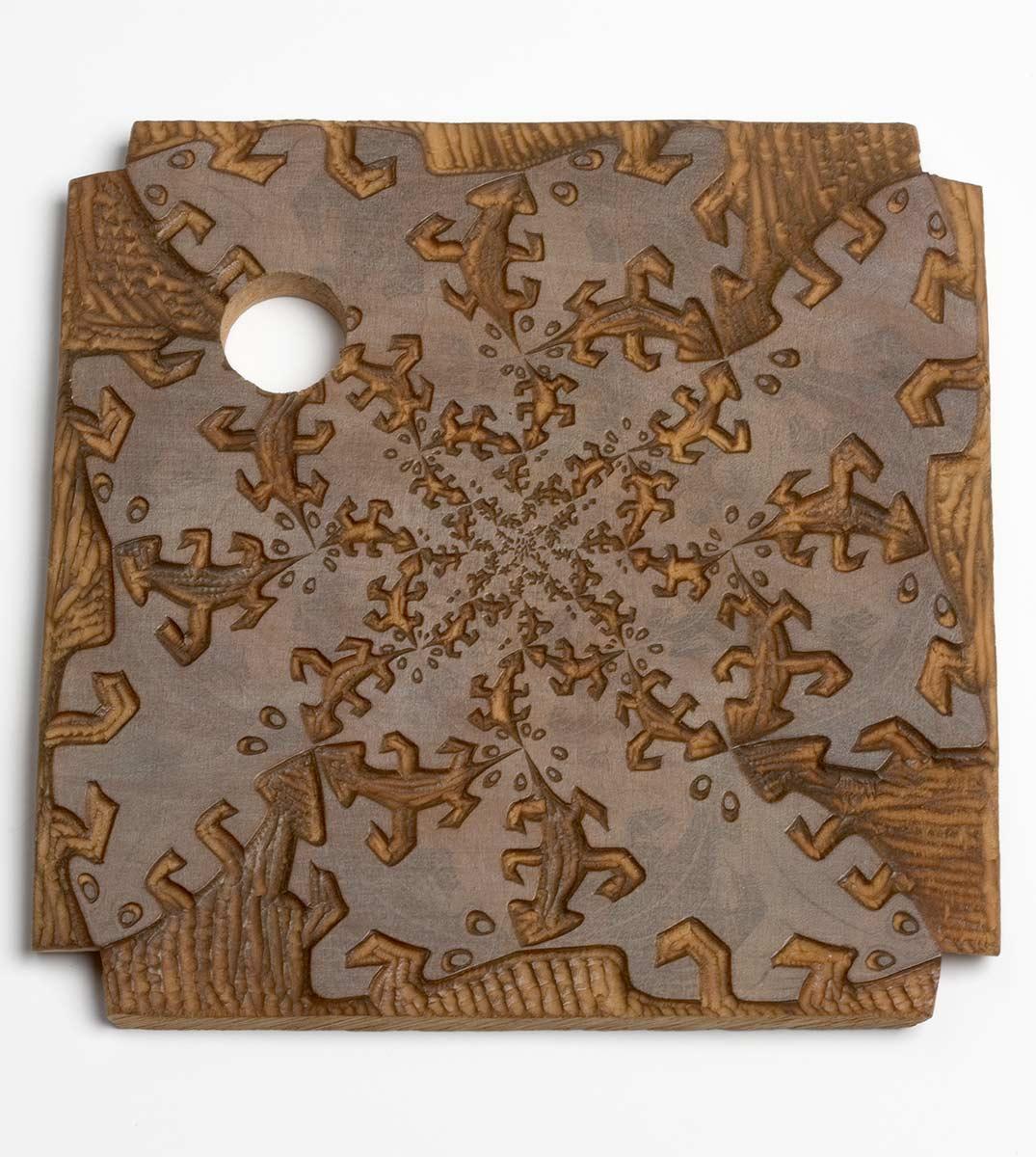
Source
* The 2013 reissue by Taschen GMBH of M.C. Escher. The Graphic Work. Originally published by Royal publishing house J.J. Tijl NV, Zwolle 1959, page 9
More Escher today

